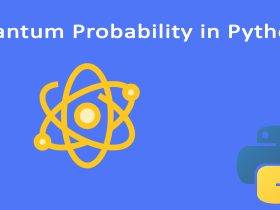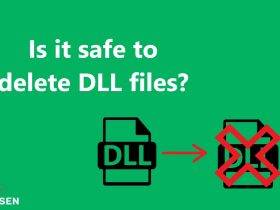Quantum Probability in Python
Quantum probability is like playing a guessing game. Imagine you have a box with some toys inside, and you can’t see what toys are inside the box. When you play this guessing game, you have to guess what toy is inside the box.
In the quantum world, it’s like the toys inside the box can be in many places at the same time, so it’s hard to say for sure what toy is inside the box. Instead of saying what toy is inside the box, we use numbers to tell us how likely it is that a certain toy is inside the box. These numbers are called quantum probabilities.
Here is a basic implementation of quantum probability in Python:
import numpy as np
# Define a quantum state as a complex vector
state = np.array([1/np.sqrt(2), 1/np.sqrt(2)])
# Define the measurement operators
measurement_0 = np.array([[1, 0], [0, 0]])
measurement_1 = np.array([[0, 0], [0, 1]])
# Calculate the probabilities of measuring 0 or 1
prob_0 = np.dot(np.dot(state, measurement_0), state.conj()).real
prob_1 = np.dot(np.dot(state, measurement_1), state.conj()).real
# Print the results
print("Probability of measuring 0:", prob_0)
print("Probability of measuring 1:", prob_1)
This code defines a quantum state as a complex vector, state, and defines two measurement operators, measurement_0 and measurement_1, corresponding to the two possible outcomes of the measurement. The probabilities of measuring 0 or 1 are then calculated by taking the inner product of the state vector with each of the measurement operators, and taking the real part of the result. Finally, the probabilities are printed to the console.
Here is a more advanced implementation of quantum probability in Python:
import numpy as np
# Define a quantum state as a complex vector
state = np.array([1/np.sqrt(2), 1/np.sqrt(2)])
# Define the measurement operators
measurement_0 = np.array([[1, 0], [0, 0]])
measurement_1 = np.array([[0, 0], [0, 1]])
# Calculate the probabilities of measuring 0 or 1
prob_0 = np.dot(np.dot(state, measurement_0), state.conj()).real
prob_1 = np.dot(np.dot(state, measurement_1), state.conj()).real
# Normalize the probabilities so that they add up to 1
normalized_prob_0 = prob_0 / (prob_0 + prob_1)
normalized_prob_1 = prob_1 / (prob_0 + prob_1)
# Use the probabilities to randomly choose a measurement outcome
outcome = np.random.choice([0, 1], p=[normalized_prob_0, normalized_prob_1])
# Update the state based on the measurement outcome
if outcome == 0:
state = np.dot(measurement_0, state)
else:
state = np.dot(measurement_1, state)
# Normalize the updated state
state = state / np.linalg.norm(state)
# Print the results
print("Initial state:", state)
print("Measurement outcome:", outcome)
print("Updated state:", state)
This code extends the previous implementation by normalizing the probabilities so that they add up to 1, and using the probabilities to randomly choose a measurement outcome. The state is then updated based on the measurement outcome, and normalized again to ensure it remains a valid quantum state. Finally, the initial state, measurement outcome, and updated state are printed to the console.
![How to replace a Sentence on multiple posts [Wordpress]](https://www.silsentech.com/wp-content/uploads/2022/04/How-to-replace-a-Sentence-on-multiple-posts-Wordpress-280x210.jpg)
















Leave a Reply